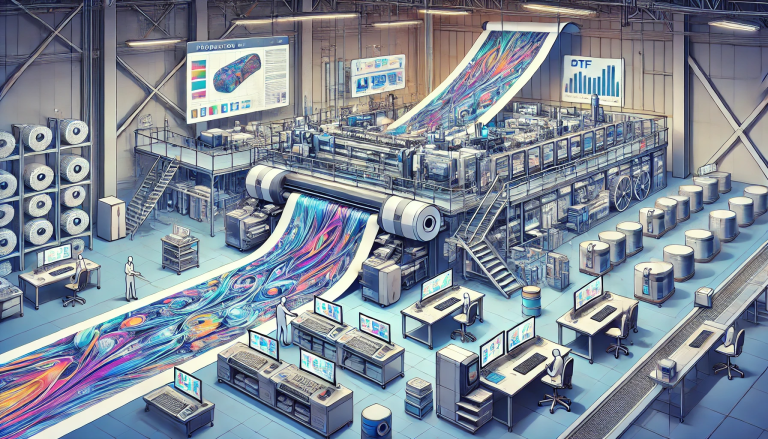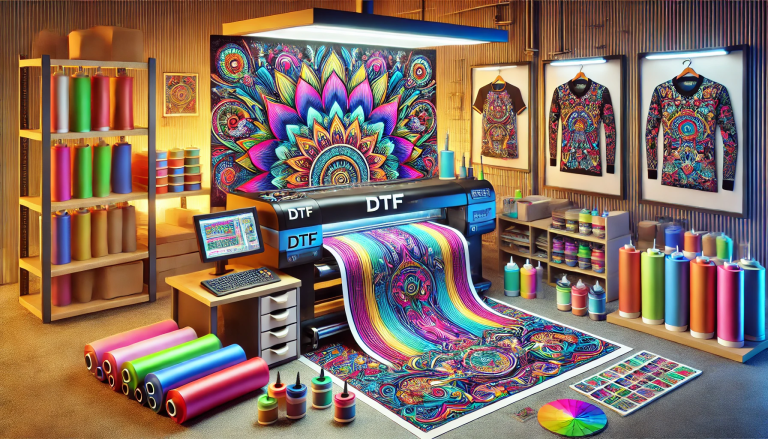“Discover the Difference: Is DTF Transfer Film and Transfer Paper the Same?” -MAXDTF- 13 x 19 DTF Film Factory, DTF gang sheets Supplier, Made in China
Introduction
Transfer film and transfer paper are two different products used for transferring images onto a variety of surfaces. The transfer film is a thin plastic sheet that is used to transfer images onto hard surfaces such as wood, metal, and glass. Transfer paper is a special paper that is used to transfer images onto fabric and other soft surfaces. Both products are used for a variety of applications, but they are not the same. In this article, we will discuss the differences between transfer film and transfer paper and how they can be used.
Creative Ways to Use DTF Transfer Film and Transfer Paper in Your Projects
1. Create Custom Clothing: DTF transfer film and transfer paper can be used to create custom clothing. Simply print your design onto the transfer paper, cut it out, and iron it onto the fabric of your choice. This is a great way to add a unique touch to your wardrobe.
- Personalize Home Decor: DTF transfer film and transfer paper can also be used to personalize home decor. Print your favorite quote or design onto the transfer paper, cut it out, and iron it onto a pillow, wall hanging, or another fabric item. This is a great way to add a personal touch to your home.
- Create Custom Gifts: DTF transfer film and transfer paper can be used to create custom gifts. Print your design onto the transfer paper, cut it out, and iron it onto a mug, t-shirt, or another item. This is a great way to give a unique and thoughtful gift.
- Make Custom Signs: DTF transfer film and transfer paper can be used to make custom signs. Print your design onto the transfer paper, cut it out, and iron it onto a piece of wood or other material. This is a great way to create a unique sign for your home or business.
- Create Custom Artwork: DTF transfer film and transfer paper can also be used to create custom artwork. Print your design onto the transfer paper, cut it out, and iron it onto a canvas or other material. This is a great way to create a unique piece of art for your home or office. Tips for Working with DTF Transfer Film and Transfer Paper1. Prepare the surface: Before applying the DTF transfer film or transfer paper, make sure the surface is clean and free of dust, dirt, and oils.
- Cut the film or paper: Use a sharp pair of scissors or a craft knife to cut the film or paper to the desired size.
- Heat the surface: Use a heat gun or iron to heat the surface before applying the film or paper. This will help the adhesive bond better.
- Apply the film or paper: Peel the backing off the film or paper and apply it to the surface. Use a squeegee or credit card to press it down firmly.
- Peel off the transfer film: Once the film or paper has cooled, carefully peel off the transfer film.
- Seal the design: To protect the design, use a clear sealant or varnish. This will help prevent fading and wear.
- Clean up: Use a damp cloth to clean up any residue left behind from the transfer film or paper. The Benefits of Using DTF Transfer Film and Transfer PaperTransfer film and transfer paper are two of the most popular materials used in the printing industry. They are used to transfer images, text, and other designs onto a variety of surfaces, including fabric, paper, wood, and metal. The use of these materials has become increasingly popular due to their versatility and ease of use.
One of the main benefits of using transfer film and the transfer paper is that they are incredibly versatile. The transfer film is a thin, flexible material that can be used to transfer images onto a variety of surfaces. It is available in a variety of colors and finishes, making it ideal for a wide range of applications. Transfer paper is a thicker material that is used to transfer images onto fabric, paper, wood, and metal. It is available in a variety of colors and finishes, making it ideal for a wide range of applications.
Another benefit of using transfer film and the transfer paper is that they are incredibly easy to use. Transfer film and transfer paper are both self-adhesive, meaning that they can be applied directly to the surface without the need for additional adhesives. This makes them incredibly easy to use and eliminates the need for messy and time-consuming adhesives.
Finally, transfer film and transfer paper are incredibly cost-effective. Transfer film and transfer paper are both relatively inexpensive materials, making them ideal for businesses and individuals on a budget. Additionally, they are incredibly durable and can withstand a variety of conditions, making them ideal for long-term use.
Overall, transfer film and transfer paper are two of the most popular materials used in the printing industry. They are incredibly versatile, easy to use, and cost-effective, making them ideal for a wide range of applications. Whether you are looking to transfer images onto fabric, paper, wood, or metal, transfer film, and transfer paper are the perfect materials for the job.
How to Choose the Right DTF Transfer Film or Transfer Paper for Your Project
When it comes to choosing the right DTF (Direct to Fabric) transfer film or transfer paper for your project, there are a few key factors to consider. First, you need to determine the type of fabric you will be transferring the image onto. Different fabrics require different types of transfer film or paper, so it is important to make sure you select the right one for your project.
Next, you need to consider the type of image you will be transferring. Different types of images require different types of transfer film or paper. For example, if you are transferring a photograph, you will need a transfer film or paper that is designed for photographic images. If you are transferring a vector image, you will need a transfer film or paper that is designed for vector images.
Finally, you need to consider the type of printer you will be using. Different types of printers require different types of transfer film or paper. For example, if you are using an inkjet printer, you will need a transfer film or paper that is designed for inkjet printers. If you are using a laser printer, you will need a transfer film or paper that is designed for laser printers.
By taking the time to consider these factors, you can ensure that you select the right DTF transfer film or transfer paper for your project. With the right transfer film or paper, you can create beautiful, professional-looking results.
Exploring the Differences Between DTF Transfer Film and Transfer Paper
Transfer film and transfer paper are two popular methods of transferring images onto a variety of surfaces. While both are effective, there are some key differences between the two that should be considered when deciding which method to use.
The transfer film is a thin, plastic-like material that is used to transfer images onto surfaces such as wood, metal, glass, and plastic. It is a popular choice for creating custom signs, decals, and other graphics. The transfer film is applied to the surface and then heated with a heat press or iron. The heat causes the film to bond to the surface, creating a permanent image.
Transfer paper, on the other hand, is a paper-like material that is used to transfer images onto fabric. It is a popular choice for creating custom t-shirts, hats, and other apparel. The transfer paper is applied to the fabric and then heated with a heat press or iron. The heat causes the paper to bond to the fabric, creating a permanent image.
The main difference between transfer film and the transfer paper is the type of surface they are used on. The transfer film is designed for use on hard surfaces such as wood, metal, glass, and plastic, while transfer paper is designed for use on fabric. Additionally, transfer film is more durable than transfer paper and can withstand more wear and tear.
When deciding which method to use, it is important to consider the type of surface you are working with and the desired outcome. The transfer film is a great choice for creating permanent images on hard surfaces, while transfer paper is a great choice for creating permanent images on fabric.
Conclusion
No, DTF transfer film and transfer paper are not the same. DTF transfer film is a type of heat transfer film that is used to transfer designs onto fabric, while transfer paper is a type of paper that is used to transfer designs onto other surfaces. Both products are used for similar purposes, but they are not the same.





